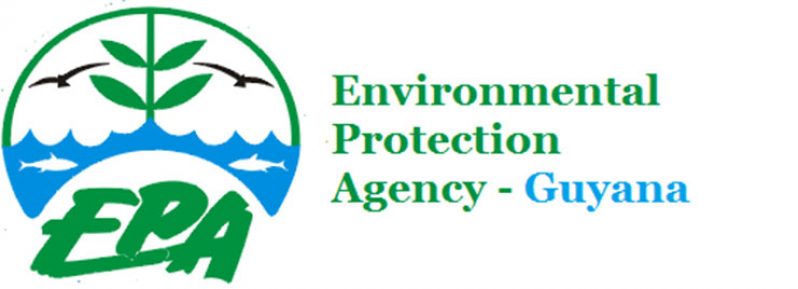WORLD Turtle Day or International Turtle Day is celebrated on May 23 each year. The initiation of this day in 2000 by the American Tortoise Rescue organisation, brings attention to turtle-conservation issues and highlights ways each of us can help protect these gentle, peaceful but often jeopardised animals.
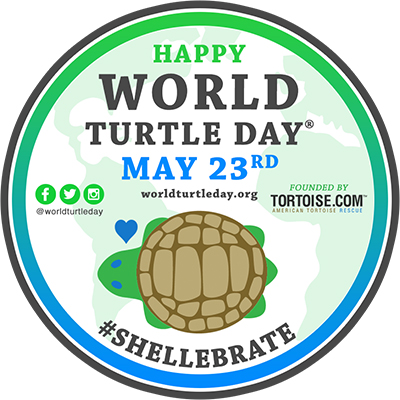 Of the few remaining endangered species of marine turtles worldwide, four of them have chosen to nest on Guyana’s shores: the Leatherback, Green, Hawksbill and Olive Ridley turtles. However, the latest report points to the turtles experiencing population growth due to the strong representation with extensive and essential work by the Guyana Marine Conservation Society (GMCS) and other collaborating organisations such as the World Wildlife Fund- Guyana (WWF). From 2018 to 2019, a study was conducted, resulting in data from the tracking and recording (telemetry programmes) of the inter-nesting and at-sea behaviours of sea turtles at the Shell Beach Protected Area (SBPA), Region One.
Of the few remaining endangered species of marine turtles worldwide, four of them have chosen to nest on Guyana’s shores: the Leatherback, Green, Hawksbill and Olive Ridley turtles. However, the latest report points to the turtles experiencing population growth due to the strong representation with extensive and essential work by the Guyana Marine Conservation Society (GMCS) and other collaborating organisations such as the World Wildlife Fund- Guyana (WWF). From 2018 to 2019, a study was conducted, resulting in data from the tracking and recording (telemetry programmes) of the inter-nesting and at-sea behaviours of sea turtles at the Shell Beach Protected Area (SBPA), Region One.
The health and population growth of these beautiful animals should not only be the responsibility of the mentioned organisations, but of every Guyanese. Among the threats to marine turtles, is the indiscriminate disposal of plastic wastes in our waterways. These pieces of plastic eventually make their way to the sea, where sea turtles ingest them, mistaking them for food. Although it does not happen as often as in previous years, discarding fishing nets in the sea may result in turtles being trapped, robbing them of life-giving oxygen. Other threats to marine turtles include climate change; over-harvesting and removal of eggs, natural predators (crabs, sharks, birds), especially for hatchlings; habitat destruction and other types of pollution.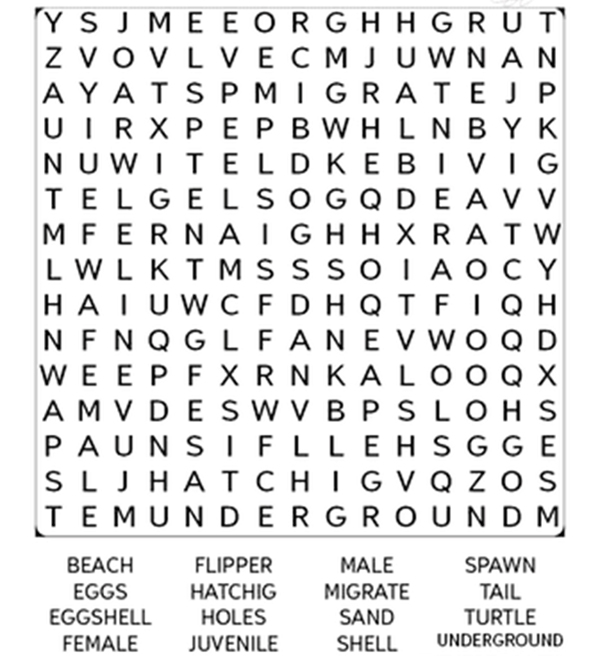
Turtles are important too!
Sea turtles have many recognised roles in the evolution and maintenance of the structure and dynamics of marine ecosystems; they are an integral part of the interspecific interactions in marine ecosystems as prey, consumer, competitor, and host. They also serve as significant conduits of nutrients and energy transfer within and among ecosystems; and can also substantially modify the physical structure of marine ecosystems.
Sea turtles are an important part of the planet’s food web and play a vital role in maintaining the health of the world’s oceans. They regulate a variety of other organisms simply by eating them. For example, green turtles mainly feed on seagrass. By grazing on seagrass meadows, they prevent the grass from growing too long and suffocating on itself. Nice and healthy seagrass beds again perform a multitude of ecosystem functions: they are a nursery ground for many marine species and additionally, are an important carbon sink and oxygen provider in the ocean.
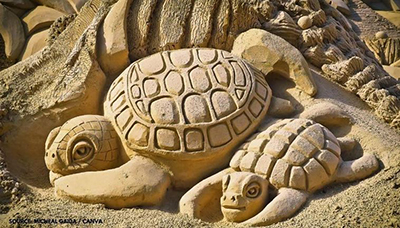 Another example is hawksbill turtles, who are mostly focused on eating sponges. Their sponge consumption is very important for a healthy coral reef by keeping the fast-growing sponges at bay and giving slower-growing corals the chance to grow. Coral reefs are thought to be the most diverse ecosystems on the planet, providing habitats and shelter for thousands of marine organisms. Many fish spawn on the coral reefs and juvenile fish spend time there before heading out to deeper waters when they mature. Coral reefs also protect coastlines from wave action and storms and are an important revenue generator for many nations through tourism.
Another example is hawksbill turtles, who are mostly focused on eating sponges. Their sponge consumption is very important for a healthy coral reef by keeping the fast-growing sponges at bay and giving slower-growing corals the chance to grow. Coral reefs are thought to be the most diverse ecosystems on the planet, providing habitats and shelter for thousands of marine organisms. Many fish spawn on the coral reefs and juvenile fish spend time there before heading out to deeper waters when they mature. Coral reefs also protect coastlines from wave action and storms and are an important revenue generator for many nations through tourism.
Leatherbacks eat jellyfish. Keeping the jellyfish population in check is important. Jellyfish prey on fish eggs and larvae and too many jellyfish means fewer fish. Loggerheads feed on hard-shelled prey, such as crustaceans. By breaking up these shells, they increase the rate at which the shells disintegrate and, as a result, increase the rate of nutrients recycling in the ocean-bottom ecosystems. 
Sea turtles also provide habitat for many marine organisms! Barnacles, algae and small creatures called epibionts attach themselves to the turtle and by carrying these around, the sea turtles provide a food source for fish and shrimp. In fact, some fish species obtain their diet strictly from epibionts found on sea turtles.
Did you know?
In some species, weather determines if turtles’ eggs become male or female. In some species, lower temperatures lead to male hatchlings, while higher temperatures lead to female hatchlings.
What can you do to save sea turtles?
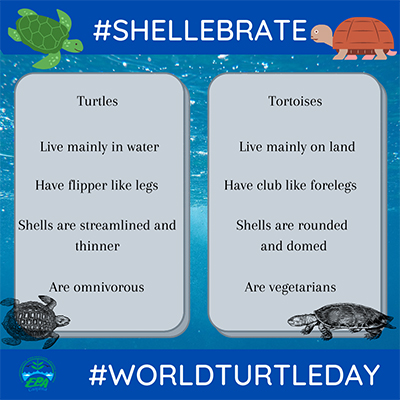 * Become a conscious and responsible seafood consumer by asking where and how your seafood was caught. Choose seafood caught in ways that do not harm or kill turtles.
* Become a conscious and responsible seafood consumer by asking where and how your seafood was caught. Choose seafood caught in ways that do not harm or kill turtles.
* Contact your local sea turtle stranding network if you see a sick or injured sea turtle.
* Support turtle conservation groups like the GMCS (https://www.facebook.com/Guyana-Marine-Conservation-Society-317183365285264) and the South Rupununi Conservation Society (https://www.facebook.com/southrupununiconservationsociety).
* Support action that help sea turtles.
What Can You Do to Protect Sea Turtle Habitat?
* Reduce marine debris that may entangle or be accidentally eaten by sea turtles.
* Participate in coastal clean-ups and reduce plastic use to keep our beaches and ocean clean. Trash in the ocean can harm sea turtles and other creatures that live there.
* Carry reusable water bottles and shopping bags. Refrain from releasing balloons, they’ll likely end up in the ocean where sea turtles can mistake them for prey and consume them.
* Keep nesting beaches dark and safe for sea turtles. Turn off, shield, or redirect lights visible from the beach. Lights disorient hatchling sea turtles and discourage nesting females from coming onto the beach to lay their eggs.
* Do not disturb nesting turtles, nests, or hatchlings. Attend organised sea turtle watches that know how to safely observe nesting sea turtles.
* Remove recreational beach equipment such as chairs, umbrellas and boats at night, so sea turtles are not turned away.
* Fill in holes and knock down sandcastles before you leave the beach. They can become obstacles for nesting turtles or emerging hatchlings.
LET’S PROTECT OUR TURTLES AND ALL OTHER FORMS OF BIODIVERSITY.
Sources
You can share your ideas and questions by sending letters to: “Our Earth, Our Environment”, C/O Communications Programme, Environmental Protection Agency, Ganges Street, Sophia, GEORGETOWN, or email us at: eit.epaguyana@gmail.com. Follow us on Facebook and Instagram and subscribe to our YouTube channel.





.jpg)


